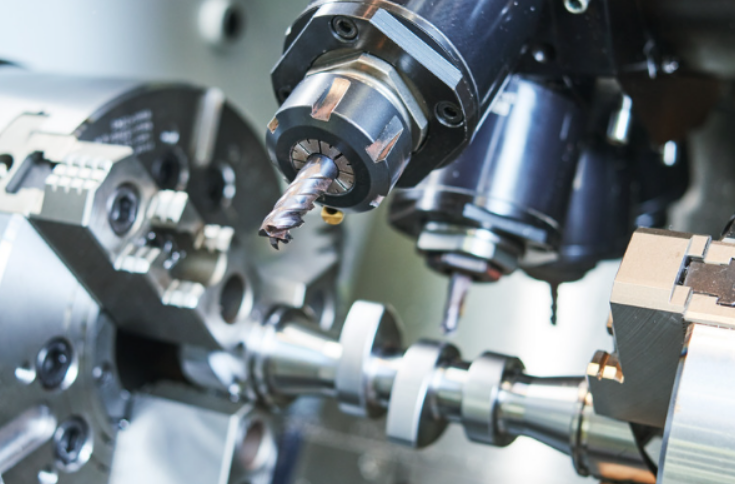When equipment starts showing signs of wear and tear, many businesses face the difficult decision of whether to replace it entirely or attempt to extend its useful life through repairs. One cost-effective and sustainable solution is machine reconditioning—a service that can breathe new life into your machinery, ensuring it runs efficiently for years to come.
In this article, we’ll take a closer look at the process of machine reconditioning, the benefits it offers, and how it can help businesses maximise the life of their toolmaking machinery and other essential equipment.
What is Machine Reconditioning?
Machine reconditioning is a comprehensive process that involves restoring worn-out machinery to its original functionality. This typically includes repairing, replacing, and refurbishing key components that have been damaged or worn over time. Reconditioning is a viable alternative to purchasing entirely new equipment, especially for expensive machines where the cost of new parts or machinery may be prohibitive.
A professional reconditioning service addresses various issues such as wear and tear, mechanical malfunctions, and performance degradation, giving your machines a second life at a fraction of the cost of a replacement.
The Process of Machine Reconditioning
Machine reconditioning is a detailed process that varies depending on the type of equipment and its condition. However, the general steps involved are:
- Inspection and Assessment
The first step is a thorough inspection of the machine to assess the extent of wear and damage. Experts will identify all the components that need attention, including any mechanical or electrical issues that may be affecting performance. A detailed report is provided to outline the necessary repairs and reconditioning efforts. - Parts Replacement
One of the primary aspects of reconditioning is parts replacement. Over time, parts like bearings, gears, seals, and electrical components wear out. These are replaced with high-quality, often OEM (Original Equipment Manufacturer) parts to restore the machine to its optimal performance. - Refurbishing Key Components
Some components may be refurbished rather than replaced. For example, toolmaking machinery such as lathes or CNC machines may have parts that can be cleaned, reshaped, or treated to restore their performance. - Testing and Calibration
After repairs are made, the equipment is rigorously tested to ensure it meets all necessary standards. Calibration ensures that machines are functioning as they should, with accurate readings and precise operations. - Final Touches
Finally, the machine is given a cosmetic overhaul—paint, seals, or surface coatings are applied to restore its appearance and protect it from future wear. This not only improves the aesthetics but also helps to extend the longevity of the equipment.
The Benefits of Machine Reconditioning
Cost-Effective Solution
The most significant benefit of reconditioning your machinery is the cost savings. Purchasing brand-new equipment can be prohibitively expensive, especially for complex machines or those used in heavy industries. By opting for reconditioning, businesses can get their machines back in action at a fraction of the cost.
Extended Equipment Life
Reconditioning is a great way to extend the lifespan of your machinery. Properly reconditioned machines can continue to operate efficiently for many more years, saving you from frequent replacements. With the right care and maintenance, these machines can offer a reliable service long after their original expected lifespan.
Improved Performance
After reconditioning, your equipment should perform like new, with the added benefit of modernised components and systems. Over time, as technology advances, reconditioning services can also include updates to bring machines up to current standards, improving performance, energy efficiency, and overall productivity.
Curbing Downtime
When machinery breaks down, it often results in costly downtime that can disrupt operations. By regularly maintaining and reconditioning your equipment, businesses can reduce the likelihood of unexpected breakdowns. Moreover, choosing reconditioning can mean faster turnaround times than waiting for a new machine to be delivered.
Choosing the Right Reconditioning Service
It’s essential to choose a reputable machine reconditioning service to ensure the best results. Look for a company with experience in your specific type of equipment—whether it’s toolmaking machinery, heavy industrial equipment, or specialised manufacturing machines. The service should have skilled technicians, the right tools, and the capacity to source high-quality replacement parts.
Danube Engineering understands that machine reconditioning is a smart solution for businesses wanting to extend the life of their equipment. By replacing parts, refurbishing machinery, and ensuring precise repairs, they help your equipment perform like new—saving money, reducing downtime, and boosting efficiency. Whether it’s toolmaking machinery or heavy equipment, expert reconditioning from Danube Engineering offers long-term value and improved performance.
